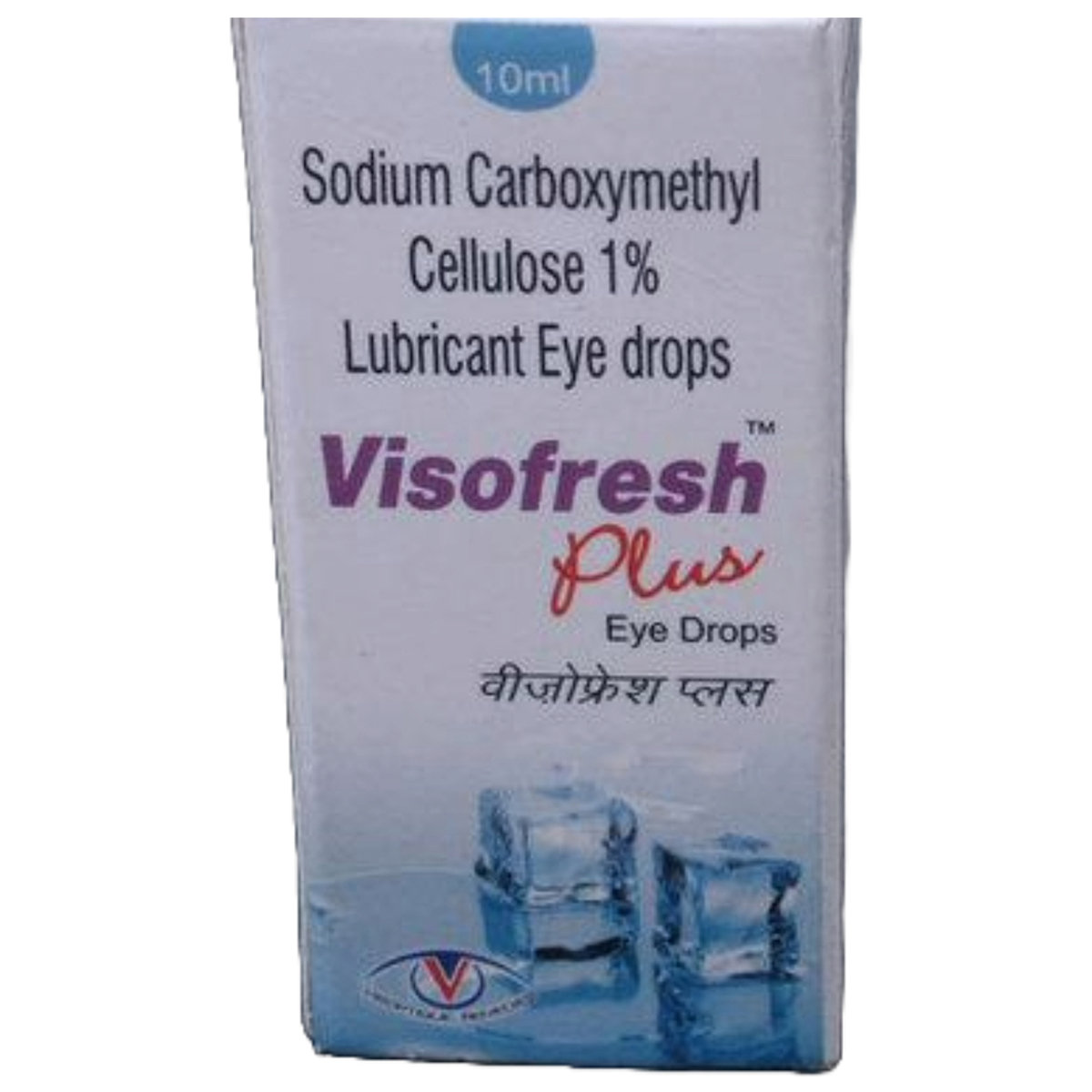Carboxymethylcellulose
About Carboxymethylcellulose
Carboxymethylcellulose belongs to the group of 'ophthalmic medication,' primarily used to treat dry eyes. Dry eye(s) is a condition in which the eye fails to make enough tears to coat it, which exposes the cornea and conjunctiva (outer coverings of the eye) to evaporation and subsequent damage.
Carboxymethylcellulose contains Carboxymethylcellulose, an eye lubricant known as artificial tears. It works similarly to natural tears and provides temporary relief from burning and discomfort due to the eye's dryness by maintaining proper lubrication of the eyes and acting as a protectant against further irritation.
You are advised to take Carboxymethylcellulose as recommended it. The most common side effects of Carboxymethylcellulose are irritation, pain, and blurred vision. They do not require medical attention and gradually resolve over time. However, if the side effects are persistent, reach out to your doctor.
Carboxymethylcellulose is for external use only. Never encourage self-medication or suggest your medicine to someone else. If you wear contact lenses or are wearing them, remove them before using Carboxymethylcellulose, and you can put them back 15 minutes after using Carboxymethylcellulose. Inform your doctor if you are pregnant, breastfeeding, allergic to this medicine, or taking any other medication. It is advised not to drive or operate heavy machinery after using this medicine as it may cause blurring of vision and affect your ability to drive.
Uses of Carboxymethylcellulose
Medicinal Benefits
Carboxymethylcellulose is an eye lubricant, also known as artificial tears. It works similarly to natural tears and provides temporary relief from burning and discomfort due to the eye's dryness by maintaining proper lubrication of the eyes and acting as a protectant against further irritation.
Directions for Use
Storage
Side Effects of Carboxymethylcellulose
- Irritation in eye
- Continued eye redness
- Pain in eye
- Blurred vision
- Redness of the eye
Drug Warnings
Do not take Carboxymethylcellulose if you are allergic to any of its ingredients. Inform your doctor if you are pregnant, breastfeeding, allergic to this medicine, or taking any other medication. It is advised not to drive or operate heavy machinery after using this medicine as it may cause blurring of vision and may affect your ability to drive. To avoid contamination, do not touch the tip of the container to any surface. Replace the cap after use. If you experience eye pain, vision changes, continued redness, or irritation of the eye. If the condition worsens or persists for more than 72 hours, discontinue use and consult a doctor.
Drug Interactions
Drug-Drug Interactions: No interactions found.
Drug-Food Interactions: No interactions found.
Drug-Disease Interactions: No interactions found.
Drug-Drug Interactions Checker List:
Safety Advice

Alcohol
cautionCarboxymethylcellulose is not known to interact with Carboxymethylcellulose is taken together, but it should be taken in limit.

Pregnancy
consult your doctorDue to the negligible systemic exposure and the lack of pharmacological activity, Carboxymethylcellulose can be used during pregnancy only when a doctor recommends it.

Breast Feeding
consult your doctorDue to the negligible systemic exposure and the lack of pharmacological activity, Carboxymethylcellulose can be used during pregnancy only when a doctor recommends it.

Driving
cautionCarboxymethylcellulose may cause transient blurring of vision which may impair the ability to drive or operate machines. Patients should wait until their vision has cleared before driving or using machinery.

Liver
not applicableIt can be safely taken, and the Carboxymethylcellulose usually does not affect the liver.

Kidney
not applicableIt can be safely taken, and the Carboxymethylcellulose usually does not affect the Kidney.

Children
consult your doctorCarboxymethylcellulose can be given safely to children provided. However, please consult a doctor before giving Carboxymethylcellulose to children.
Habit Forming
Diet & Lifestyle Advise
- Always use clean towels or tissues to wipe your eyes and face.
- Regularly wash and change the pillowcases.
- If you wear contact lenses: Clean and replace contact lenses more often. Never share contact lenses. Always remember to wash your hands before inserting the contact lens.
- Avoid staring at digital screens for longer durations. Rest your eyes every 20 minutes.
- Blink regularly as it helps spread hydrating substances such as mucus and tears across the eyes.
Special Advise
- If the solution changes color or becomes cloudy, do not use it. Keep out of the reach of children.
Patients Concern
Disease/Condition Glossary
Dry eye(s) is a condition in which the eye fails to make enough tears to coat it, which exposes the cornea and conjunctiva (outer coverings of the eye) to evaporation and subsequent damage.
FAQs
Carboxymethylcellulose is an eye lubricant, also known as artificial tears. It works similar to natural tears and provides temporary relief from burning and discomfort due to the eye's dryness by maintaining proper lubrication of the eyes and acting as a protectant against further irritation.
No, you should not use Carboxymethylcellulose if you are wearing contact lenses. If you wear contact lenses or are wearing them, remove them before using Carboxymethylcellulose, and you can put them back 15 minutes after using Carboxymethylcellulose.
No, Carboxymethylcellulose should not be used simultaneously with other eye medications. At least, a gap of 5 to 10 minutes should be there between using two eye medications.
Yes, the use of Carboxymethylcellulose can cause blurry vision for the short term. So, please do not drive or operate any car or machinery which requires concentration to avoid any mishappening.









